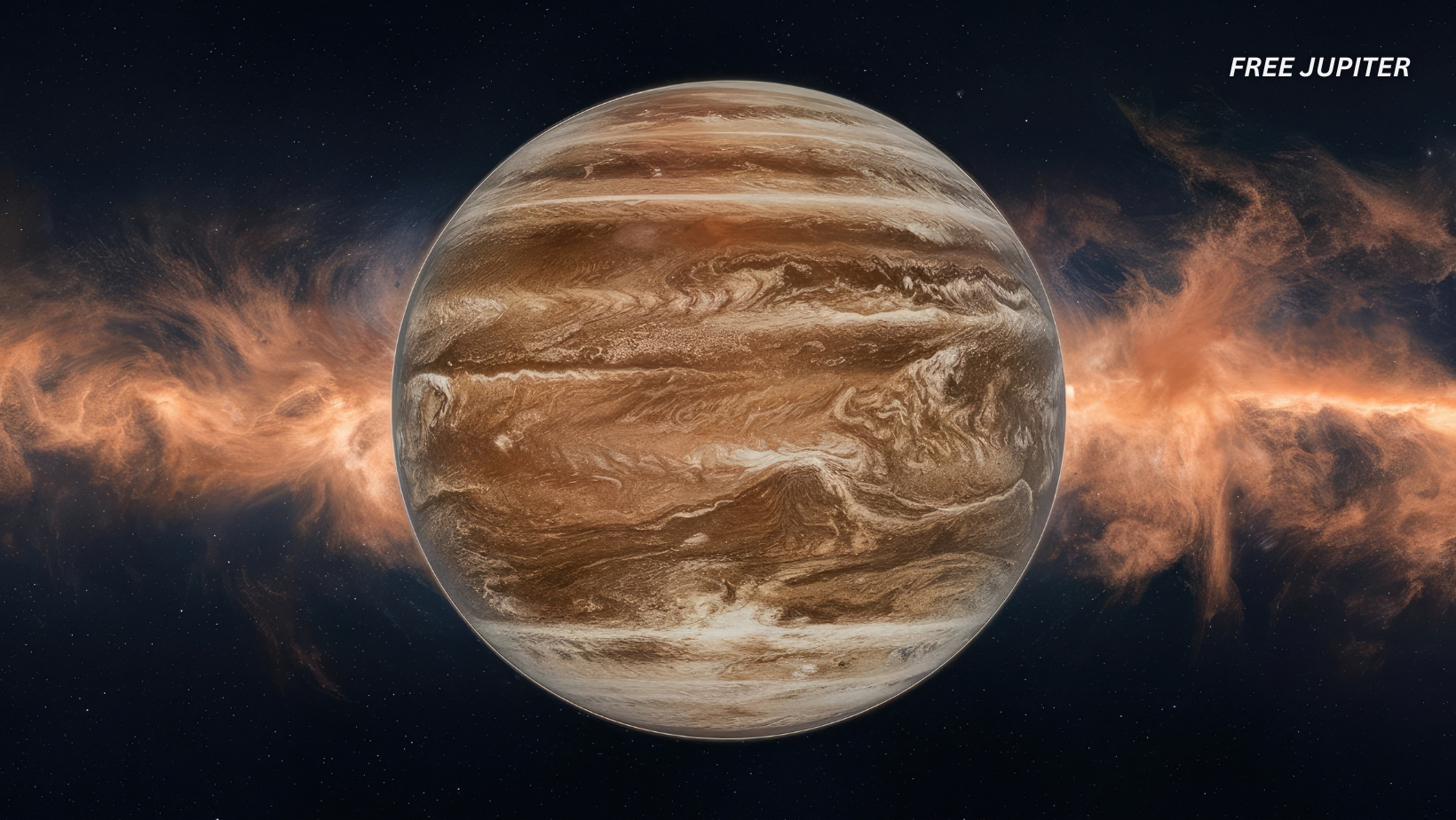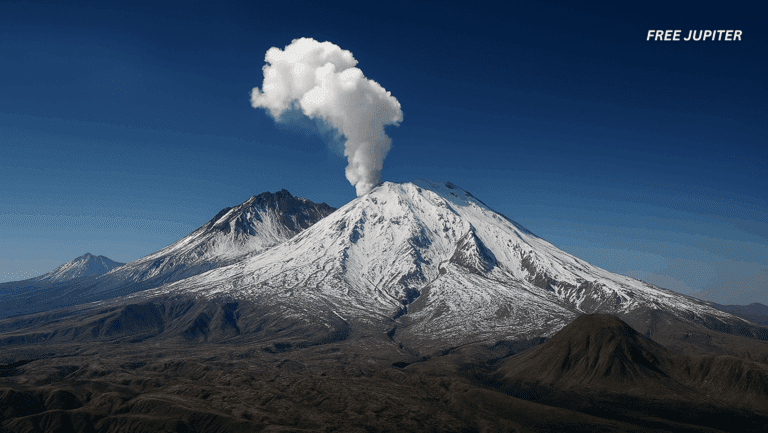Friendly Note: FreeJupiter.com shares general info for curious minds 🌟 Please fact-check all claims—and always check health matters with a professional 💙
Long before Jupiter became the familiar behemoth of the solar system, it was a true titan—far larger and more magnetic than it is today. Recent scientific sleuthing has unearthed striking details about this gas giant’s youth, painting a picture of a world so immense it could have swallowed thousands of Earths whole.
A breakthrough study, published in the journal Nature Astronomy, has turned back the cosmic clock to examine Jupiter as it was just 3.8 million years after the first solid materials formed in our solar system. The findings are nothing short of spectacular: young Jupiter was not just big, but a true colossus, with a radius nearly double its current size and a magnetic field that dwarfed its modern strength by a factor of fifty.
Peering Into Jupiter’s Early Life
To reconstruct this ancient version of Jupiter, researchers from the California Institute of Technology and the University of Michigan took an unconventional route. Instead of relying solely on traditional models of planetary formation — which often focus on how quickly young planets accumulate gas — they turned their attention to two of Jupiter’s lesser-known moons, Amalthea and Thebe.
These diminutive satellites, often overshadowed by Jupiter’s famous Galilean moons, orbit remarkably close to the planet and follow paths that tilt ever so slightly. Scientists believe these orbital quirks have remained unchanged since the solar system’s infancy, making them invaluable time capsules for understanding Jupiter’s early days.
By carefully analyzing the subtle tilts in the orbits of Amalthea and Thebe, the research team was able to deduce the original size of Jupiter and the intensity of its magnetic field. Their calculations suggest that, in its youth, the planet was a true giant—so vast that its volume could have accommodated over 2,000 Earths. Today, by contrast, Jupiter’s volume is sufficient to hold about 1,321 Earths.
A Magnetic Powerhouse
Jupiter’s ancient magnetic field was equally impressive. The researchers estimate that, at its peak, the planet’s surface magnetic field reached about 21 millitesla—roughly fifty times stronger than the value we observe today, which sits at a modest 0.4 millitesla. This magnetic might was so formidable that it carved out a substantial cavity in the primordial gas disk surrounding the young planet, regulating both Jupiter’s spin and its appetite for fresh material.
The sheer power of this early magnetic field played a decisive role in shaping the environment around Jupiter, influencing the orbits and fates of nearby objects and possibly even the broader structure of the solar system itself.
The Making of a Giant
So, how did Jupiter become so enormous in its youth? The answer lies in the process of core accretion, a fundamental mechanism in planet formation. After Jupiter’s rocky core reached a critical mass, it triggered a period of runaway gas accumulation. This runaway process inflated the young planet to gargantuan proportions, making it hot, puffy, and glowing with the energy of its violent birth.
Over millions of years, Jupiter gradually contracted under its own gravity, radiating away its primordial heat as it shrank. This slow contraction continued long after the surrounding solar nebula had dissipated, eventually producing the more compact, familiar world we observe today.
The timing of Jupiter’s inflated state is crucial for understanding solar system history. The research pinpoints this period to exactly 3.8 million years after the first solid materials—known as calcium-aluminum inclusions—formed in the early solar system. This timeline is supported by meteorite evidence showing when the solar nebula finally dispersed.
The Role of Jupiter’s Moons
The research team’s focus on Amalthea and Thebe highlights the importance of even the smallest celestial bodies in unraveling the mysteries of planetary history. While most of Jupiter’s smaller moons are thought to be captured asteroids, Amalthea and Thebe are likely original residents, their orbits tilted by a mere 0.36 and 1.09 degrees relative to Jupiter’s equatorial plane.
These slight tilts, though small, are significant for moons orbiting so close to the planet. The researchers believe that these tilts are a consequence of the gravitational influence of Io, one of Jupiter’s largest moons. By analyzing these orbital quirks, the team was able to calculate Io’s original orbit and, in turn, deduce Jupiter’s size at the time the solar nebula dissipated.
The Legacy of a Young Jupiter
While the study does not directly address how such a massive Jupiter would have influenced the early solar system, it underscores the importance of the planet’s formation and early evolution in shaping the overall architecture of our cosmic neighborhood. The sheer size and magnetic power of young Jupiter would have had profound effects on the orbits and fates of nearby objects, possibly even influencing the formation and distribution of the inner rocky planets.
The discovery also supports the bottom-up model of planet formation, in which planets grow through the gradual accumulation of dust and gas. In the case of Jupiter, this process led to a period of runaway growth, transforming the planet into a true giant before it settled into its current, more modest proportions.
Read more: Scientists Make History By Successfully ‘Freezing’ Light in Unprecedented Physics Experiment
The Science Behind the Discovery
To arrive at these conclusions, the research team used a combination of orbital mechanics, magnetic field modeling, and careful analysis of meteorite evidence. By working backward from Jupiter’s present-day spin rate and the orbits of its inner moons, they were able to reconstruct the planet’s ancient dimensions and magnetic field strength.
The team’s calculations indicate that, in its youth, Jupiter was accreting between 1.2 and 2.4 times its current mass worth of material every million years—a staggering rate of growth that explains its colossal size and magnetic power.
The Future of Planetary Science
The new study not only sheds light on Jupiter’s past but also provides a framework for understanding the formation of other giant planets in our galaxy and beyond. By establishing a clear benchmark for Jupiter’s early state, the research paves the way for future studies of planetary formation and evolution.
As scientists continue to probe the mysteries of the solar system, the story of Jupiter’s youth serves as a reminder of the dynamic and ever-changing nature of our cosmic environment. The giant planet’s early days were marked by rapid growth, intense magnetic activity, and a profound influence on the formation of the worlds around it.
Jupiter’s Place in the Solar System
Today, Jupiter remains the largest planet in the solar system, its mass more than double that of all the other planets combined. But the new research reveals that, in its youth, Jupiter was even more impressive—a true giant among giants, with a size and magnetic field that dwarfed its present-day self.
The planet’s early evolution was a critical factor in shaping the solar system, influencing the orbits and fates of countless objects and setting the stage for the emergence of the worlds we know today. As scientists continue to unravel the mysteries of planetary formation, the story of Jupiter’s colossal past will remain a cornerstone of our understanding of the cosmos.
The Big Picture
The discovery of Jupiter’s ancient size and magnetic field is more than just a fascinating piece of planetary history—it is a key to unlocking the secrets of our own origins. By understanding how Jupiter formed and evolved, scientists can gain deeper insights into the processes that shaped the solar system and, ultimately, the conditions that made life on Earth possible.
The research also highlights the importance of looking beyond the obvious when studying the cosmos. By focusing on the subtle orbital quirks of Jupiter’s inner moons, the team was able to reconstruct a critical chapter in the planet’s history—a reminder that even the smallest details can hold the key to understanding the biggest mysteries.
Read more: Mysterious Bacteria With ‘Unique Abilities’ Found on Chinese Space Station
Final Thoughts
Jupiter’s story is one of growth, change, and cosmic influence. From its humble beginnings as a rocky core to its brief but spectacular reign as a true giant, the planet’s early years were marked by rapid expansion, intense magnetic activity, and a profound impact on the solar system as a whole.
The new study provides a valuable benchmark for future research, offering a clearer picture of how Jupiter—and by extension, the entire solar system—came to be. As scientists continue to explore the mysteries of planetary formation, the legacy of Jupiter’s colossal past will remain a touchstone for understanding the origins of our cosmic home.










